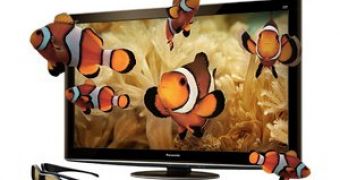It was only last year that the 3D Display mode truly started to gain popularity, and it seems that some companies are more excited about the prospect than others, some even believing that it won't take long for glasses-free panels to become mainstream.
3D films have existed for years and cinemas have played them for just as long, while some home setups also had the means to display them.
A regular 3D panel works on the principle of dual sets of images, sent to each eye independently and synchronized by a pair of 3D glasses.
In order to qualify as a 3D panel, a monitor needs to have a refresh rate of at least 120 Hz, so that 60 Hz may be dedicated to each eye, respectively.
Video cards and multimedia playback devices also need to be capable of rendering such media.
Unfortunately, in all instances, customers still have to rely on those things known as active shutter or passive polarized glasses.
It is these glasses that have prevented 3D from taking off for real, but with glasses-free solutions finally emerging, this situation won't last much longer.
In fact, a certain company, AU Optronics (AUO) by name, actually expects such 3D products to enter the mainstream market in as short a time as one or two years.
Considering the prices of even regular 3D panels, such an optimistic outlook may be seen as somewhat questionable, but then again, tablets were also looked upon with skepticism when the iPad first debuted and they're already eating the share of netbooks.
Shipments of 3D panels in 2011 are expected to reach 10 to 13 million, a nice jump from last year's 3.2 million, which was less than the initial estimates. This will account for about 6% of all LCD TVs sold throughout the year, the actual figure being of roughly 215 million.

 14 DAY TRIAL //
14 DAY TRIAL //